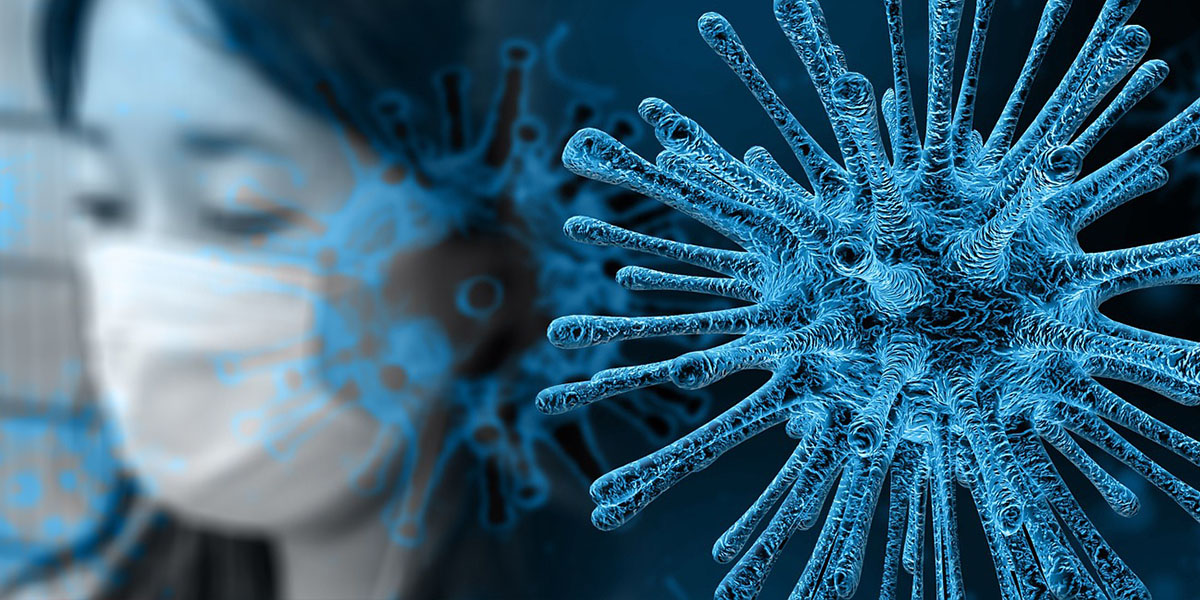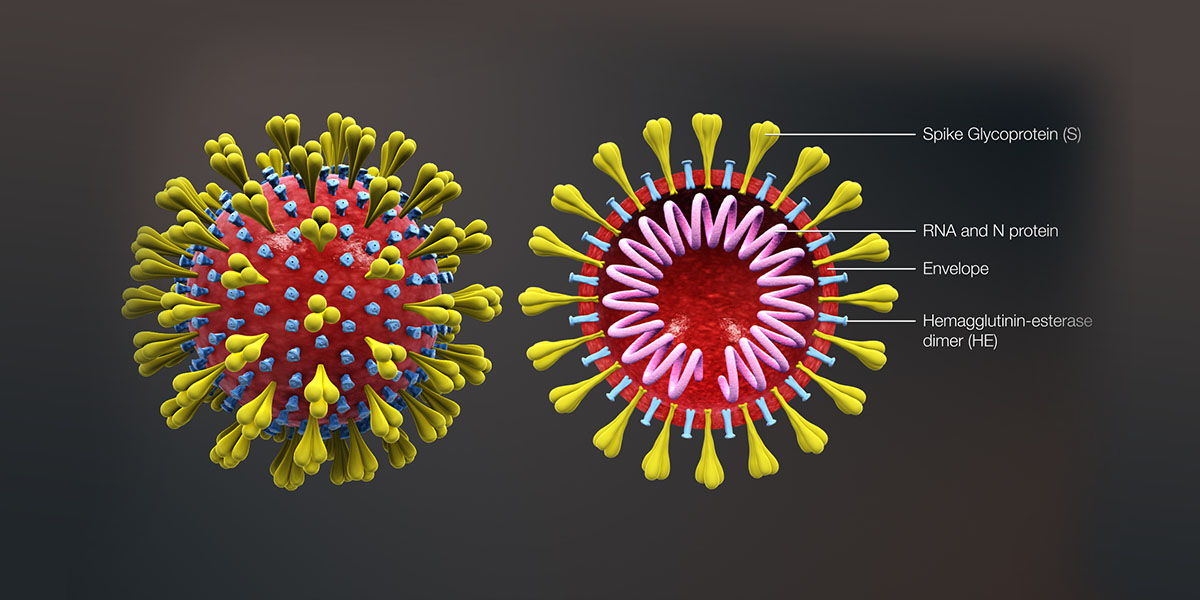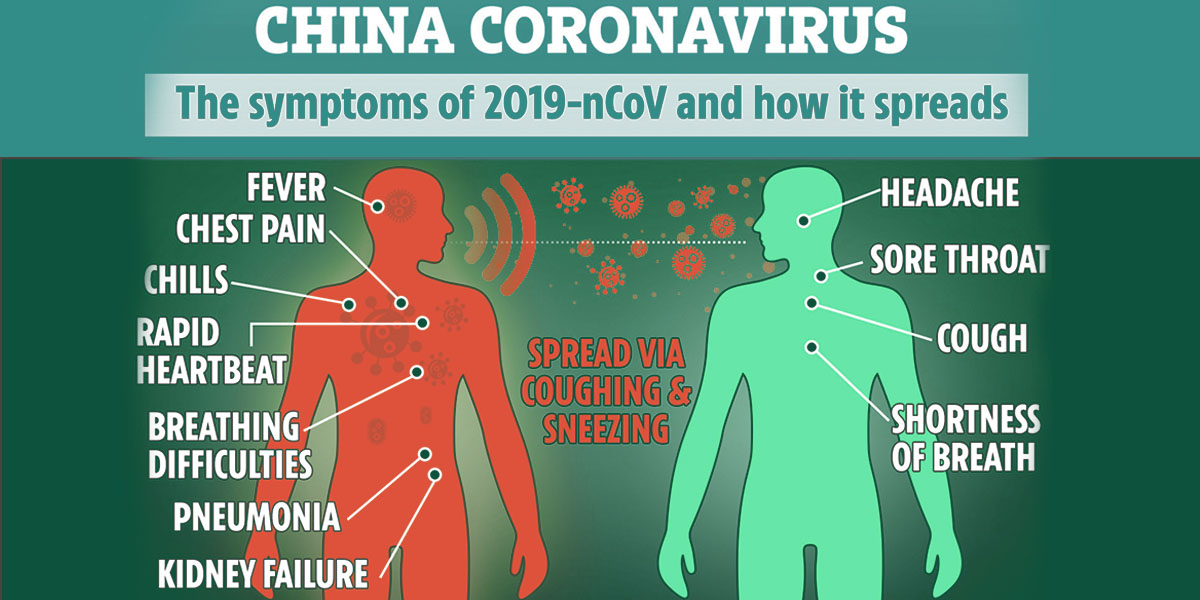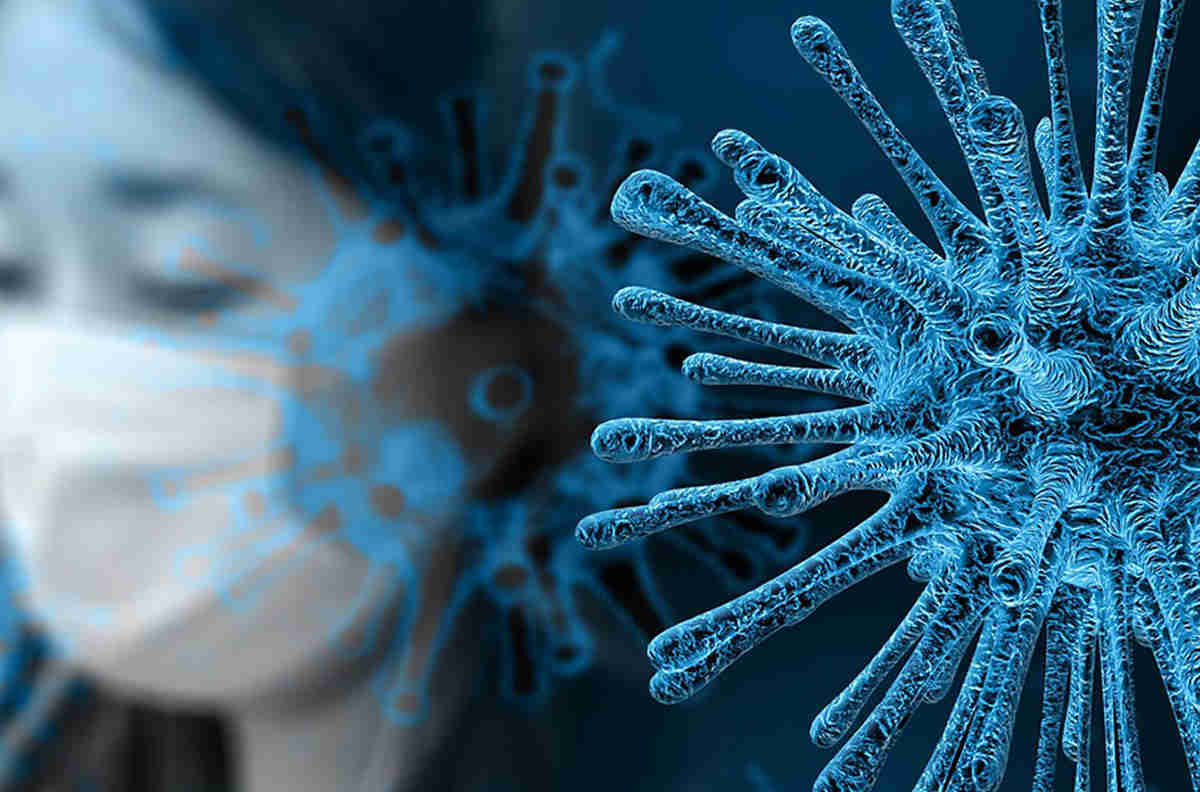December 31st, 2019, Tuesday; the day when China reported a cluster of cases of pneumonia in people associated with the Huanan Seafood Wholesale Market in one way or another. The market is located in Wuhan, Hubei Province. Later Chinese health authorities confirmed on January 7th, 2020 that these cases were associated with a novel coronavirus named as 2019-nCoV.
 Figure 1: Morphology of Coronavirus
Figure 1: Morphology of Coronavirus
Coronaviruses belong to a family of viruses known as Coronaviridae. The name coronavirus has its origin from the Latin word corona that means crown or halo. Under an electron microscope, they look like spiked rings and these spikes as shown in Figure 1 form a halo or crown around their viral envelope thus justifying its name corona. The structure of coronaviruses consists of a strand of RNA enclosed within the envelope and like a virus, it cannot reproduce unless it gets inside a living cell and lives on its machinery. The spikes are present on the envelope and help the virus to bind itself to the living cell and make its way inside. Once inside, they turn the cell into a virus production unit producing more viruses and transferring them out of the cell. The virus progeny infects other cells and the cycle starts anew.
These types of viruses are typically found in animals like livestock, household pets, and wildlife e.g. bats. When they infect a human, they create symptoms including fever, inflammation in lungs, and respiratory problems. Insensitive individuals like elderly people or those with HIV-AIDS, the coronavirus can result in very serious respiratory problems, leading to pneumonia and eventually death.
According to the WHO, coronaviruses belong to a family of viruses that are capable of causing health issues ranging from the very common cold to SARS and MERS that are potentially severe diseases. Initially, these viruses were transmitted from animals to humans. For instance, it was believed that the viruses that infected the first victims of SARS were transmitted from civet cats, while the Middle East respiratory syndrome (MERS) was transmitted from a type of camels to humans.
Although several known coronaviruses have been circulating in animals that have not yet infected humans, a new type of coronavirus was somehow transmitted to humans and the very first cases of this pneumonia-like disorder were reported at the end of December 2019 in Wuhan, Hubei Province China.
 Figure 2: Symptoms of coronavirus and how it spreads
Figure 2: Symptoms of coronavirus and how it spreads
It was first reported to the WHO on New Year’s Eve and the following month, scientists and researchers found out that this illness was linked to a new type of coronavirus and was named as novel coronavirus, 2019-nCoV. This virus is believed to have originated in Wuhan, a Chinese city that is situated in Hubei Province and is about 650 miles south of Beijing. The virus rapidly caused infection in the masses in the city of more than 11 million people. The Huanan Seafood Wholesale Market, which sells fish, as well as a panoply of meat from other animals, including bats and snakes, was believed to be where the virus originated. Although the initial cases were believed to be associated with the market, the latest epidemiological studies have shown that human to human transmission is the major cause of the massive spread of the infection.
Among the cases of coronavirus confirmed so far in China, a majority of the people had been to the Huanan Seafood market in recent weeks. However, the very first patient of coronavirus never visited the market so it is believed that the virus originated somewhere outside and then was transported to the market. The market has played as a very important missing piece in the puzzle of coronavirus but considering it a variable, scientists and researchers have continued to test and reach the original cause. Although the seafood market was shut down by Chinese authorities on January 1st, 2020, by February 8th, 2020 the virus has infected over 34,958 people worldwide, with over 34,611 cases in China alone and had claimed 724 lives, 722 in China and 2 outside China mainland. This supports the theory of human to human transmission of the virus. The novel coronavirus (2019-nCoV) is affecting 28 countries and territories around the world.
On January 22nd, a report published in the Journal of Medical Virology declared snakes to be the likely cause of 2019-nCoV. But this suggestion was overruled by the two further case studies published just a day later on January 23rd. Other than this, a group of Chinese scientists studied the genetic code of the virus and presented its comparison with SARS coronavirus and another bat coronavirus in a paper uploaded on preprint website biorXiV. They found a shocking similarity of 80% of the genetic code with SARS coronavirus and 96% with bat coronavirus. The following month on February 2nd, 2020 the officials in Hubei province declared a 96% similarity of the virus with the already known bat-borne coronavirus and thus it became the potential criminal of the epidemic.
The infection caused by 2019-nCoV is being termed as “pneumonia-like” because the virus causes symptoms that are actually pneumonia-like. Some patients show symptoms experienced in mild cases of pneumonia while others have a more severe response. According to a report published in a medical journal The Lancet on January 24th some of the more common symptoms presented by the patients are dry cough, fever, increased body temperature, fatigue, muscle pain and difficulty in breathing whereas the less common symptoms include headaches, coughing up mucus or blood and diarrhea.
According to the executive director of Health Emergencies Programme of WHO, there is no recognized Vaccine against coronaviruses. Although scientists have already sequenced the genetic code of the virus, introducing a vaccine will be a matter of a year or so.
 Symptoms of Coronavirus
Symptoms of Coronavirus
Therefore, it is the need of the hour that the authorities and officials of the concerned organizations provide adequate support and care to the patients, ensure the use of a range of effective tools to identify the real cause of the virus and promote effective communication between the nations in order to combat it.
Apart from the measures taken on the organizational level, the best way to prevent infection on an individual level is to avoid being exposed to the virus. For this purpose, the most effective preventive measures include regularly washing hands with water and soap especially before eating, after going to the toilet and after blowing the nose, avoid touching nose, eyes and mouth with dirty hands, avoid contact with infected individuals, stay home when sick in order to avoid the spread of the infection, cover mouth while coughing or sneezing with a tissue or handkerchief and wear a mask while traveling outside.






Super thankful for your info!
I would like to ask also if we can use UV black light to aid us to inspect our homes/offices/schools to make sure the surfaces are well cleaned.
Useful information 👍
“In our deepest moments you say the most inadequate things.”